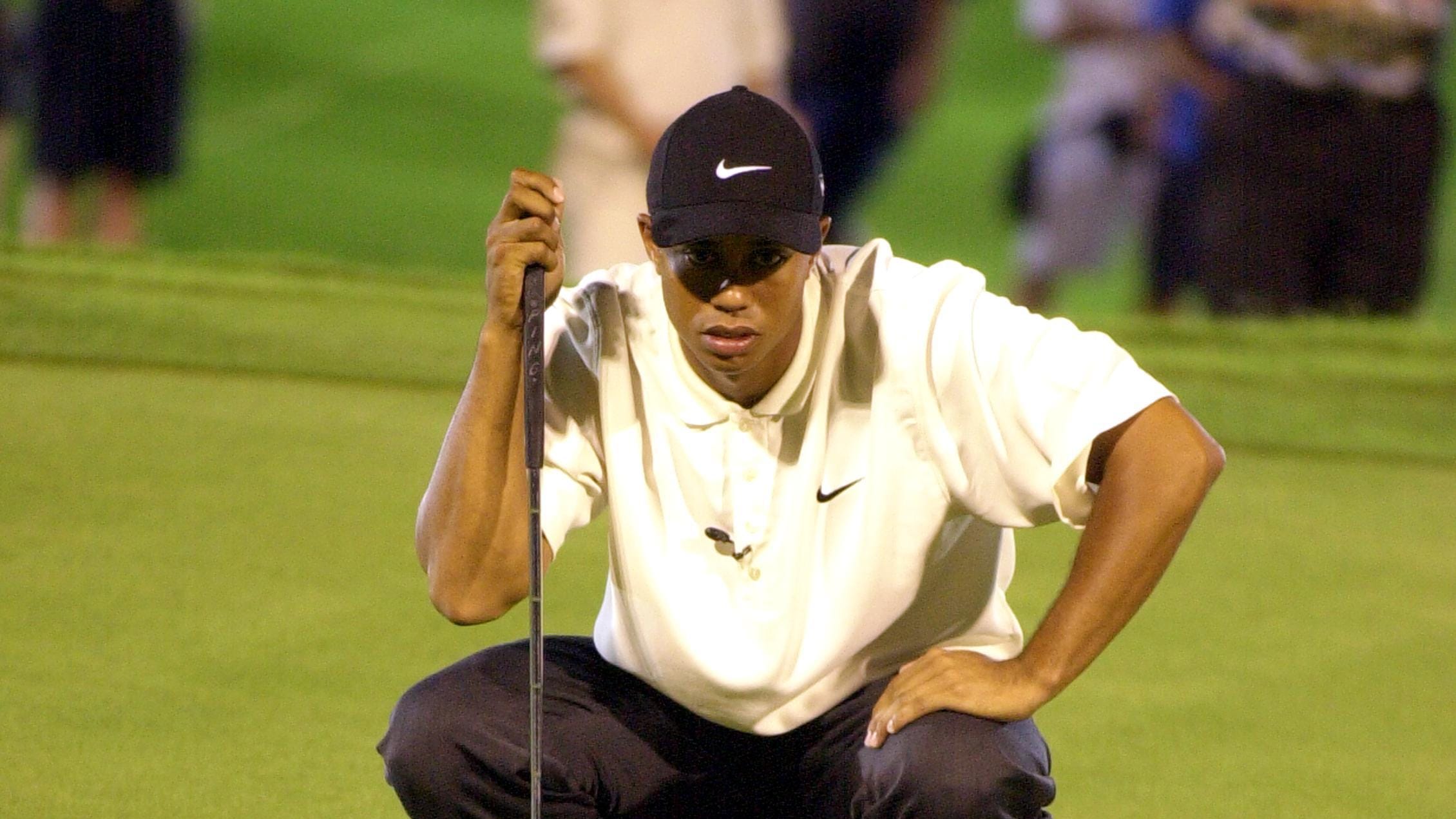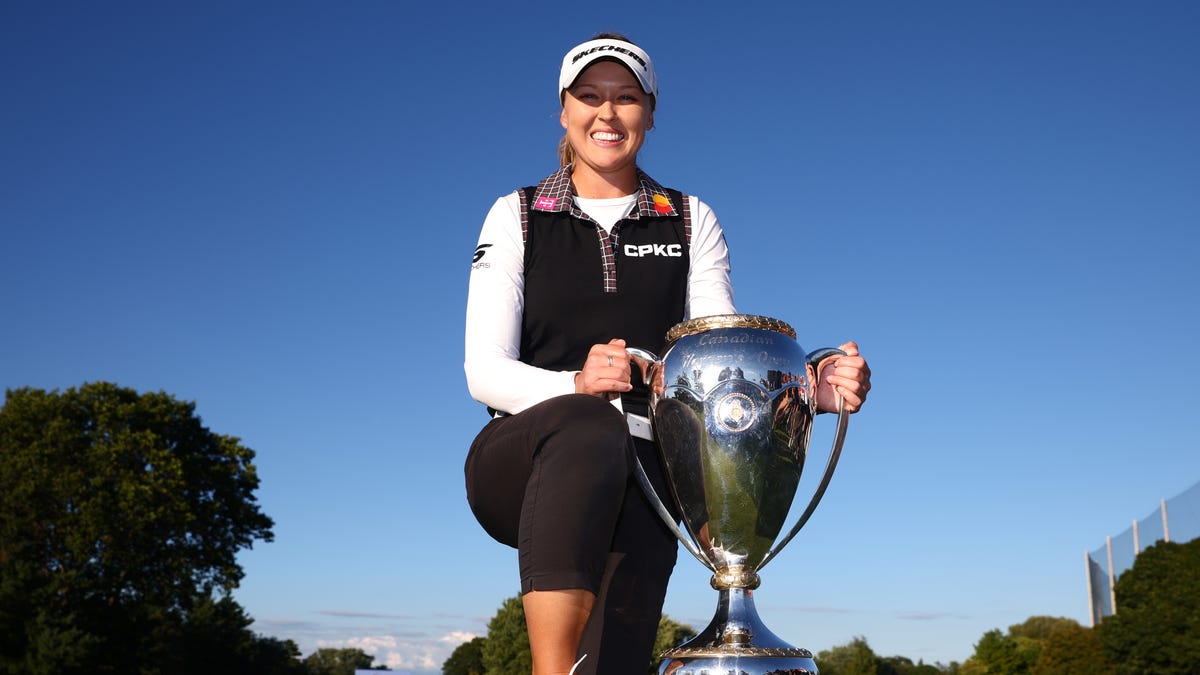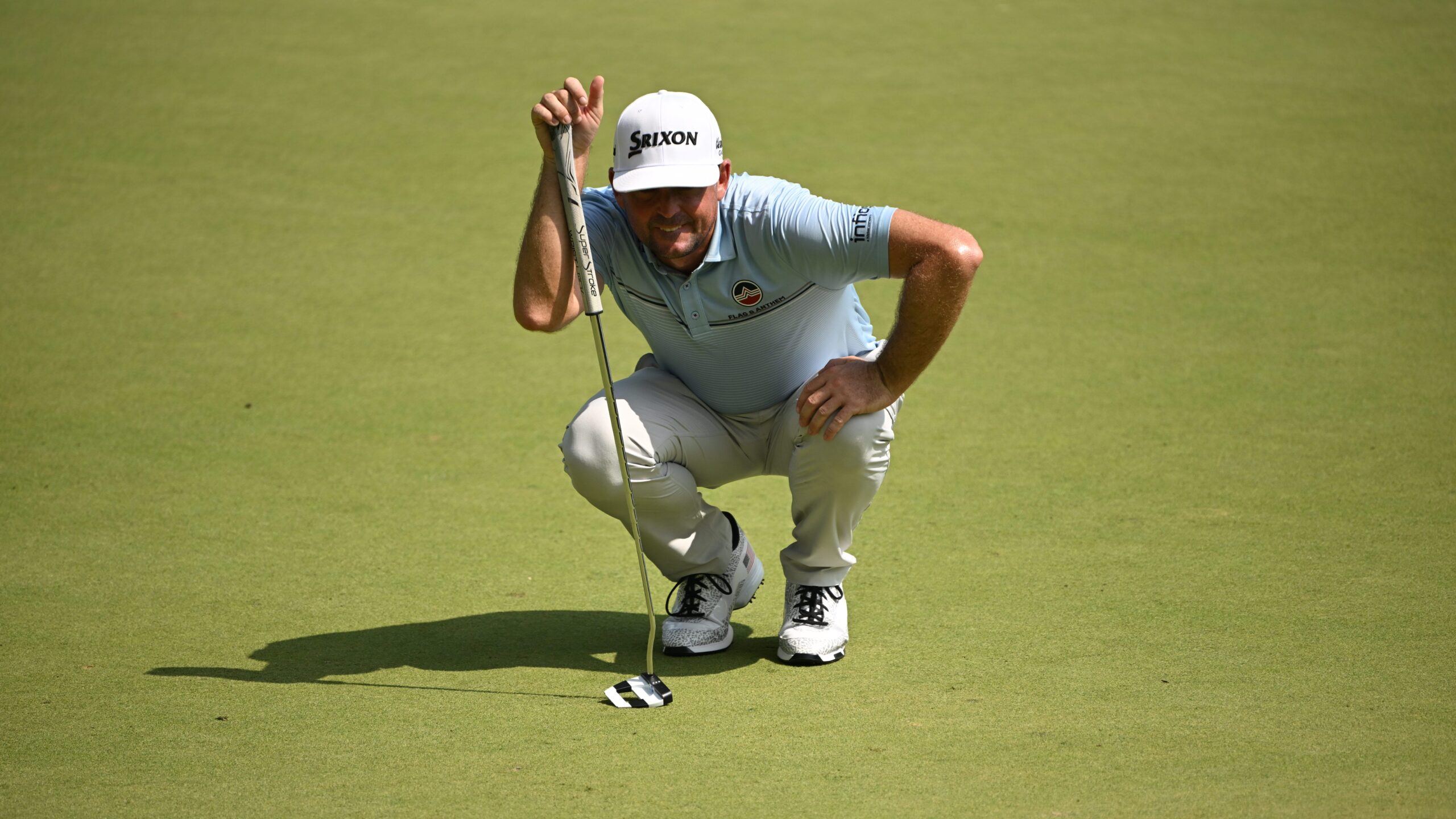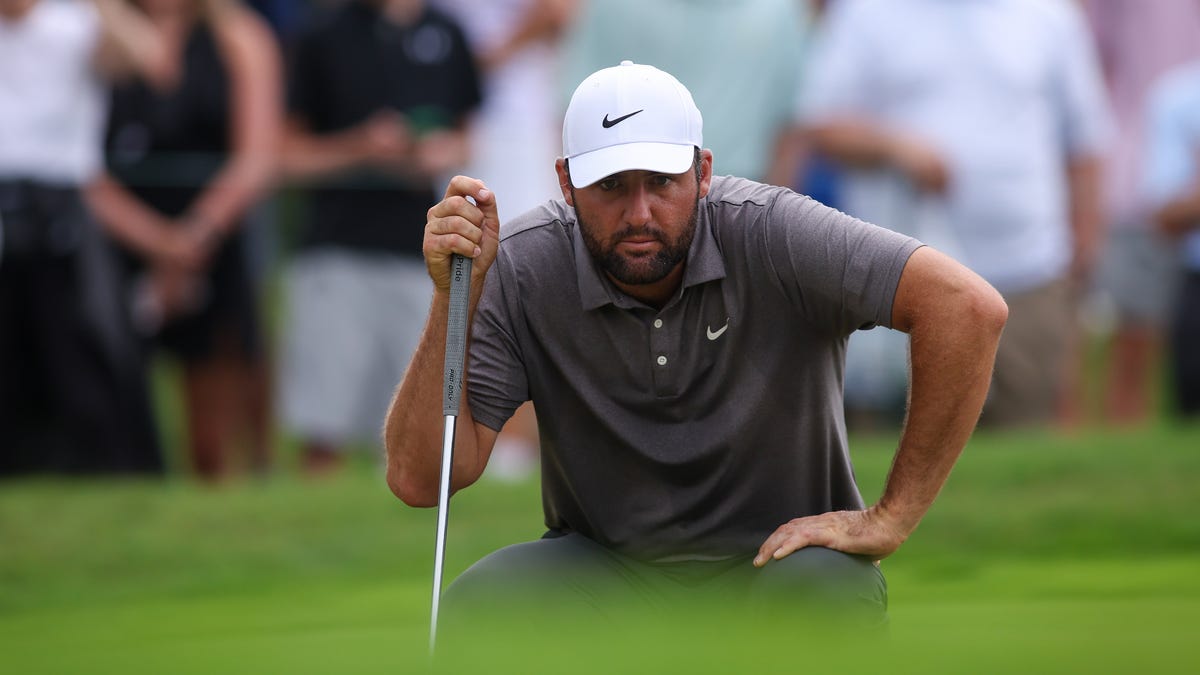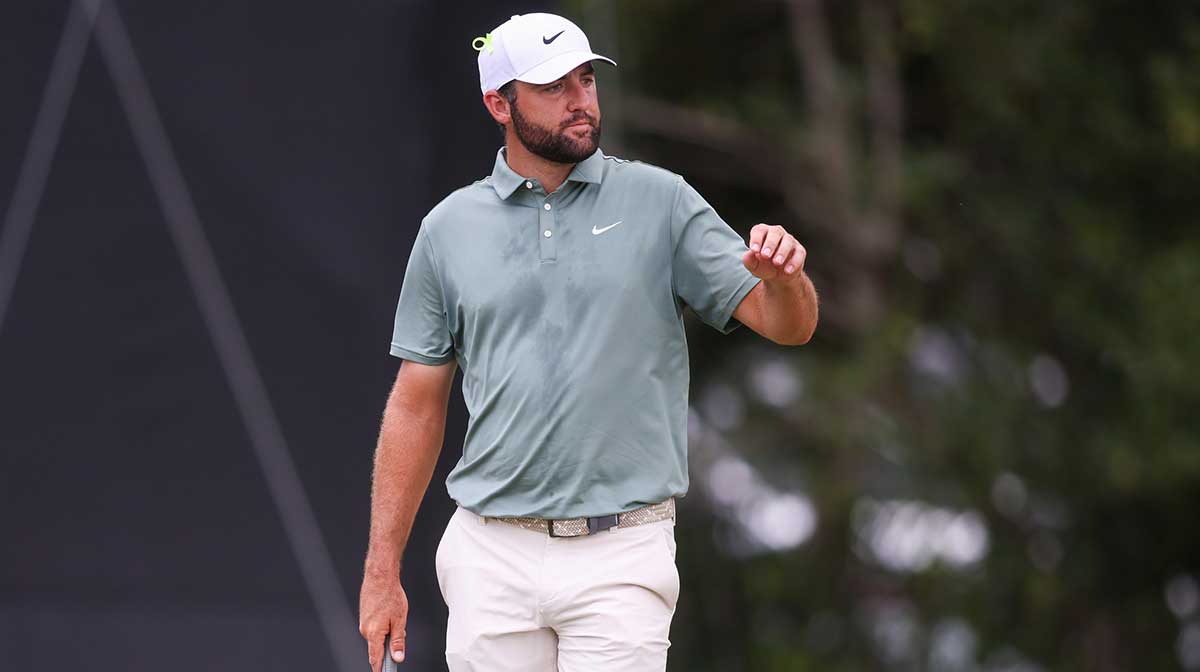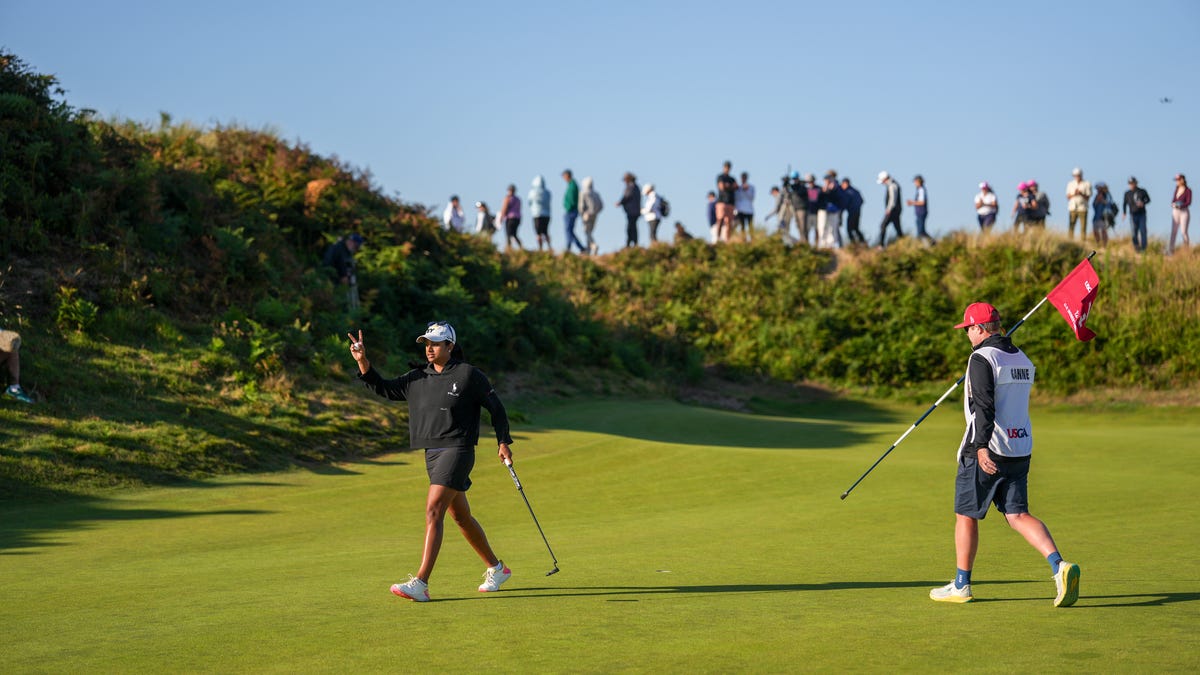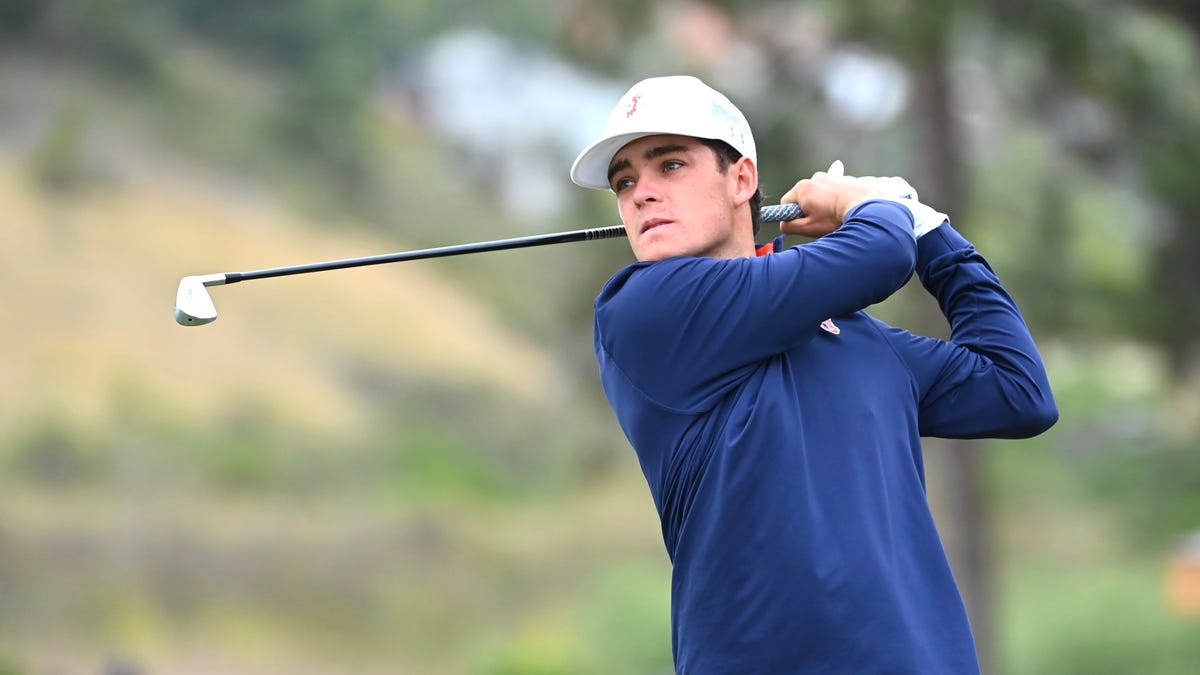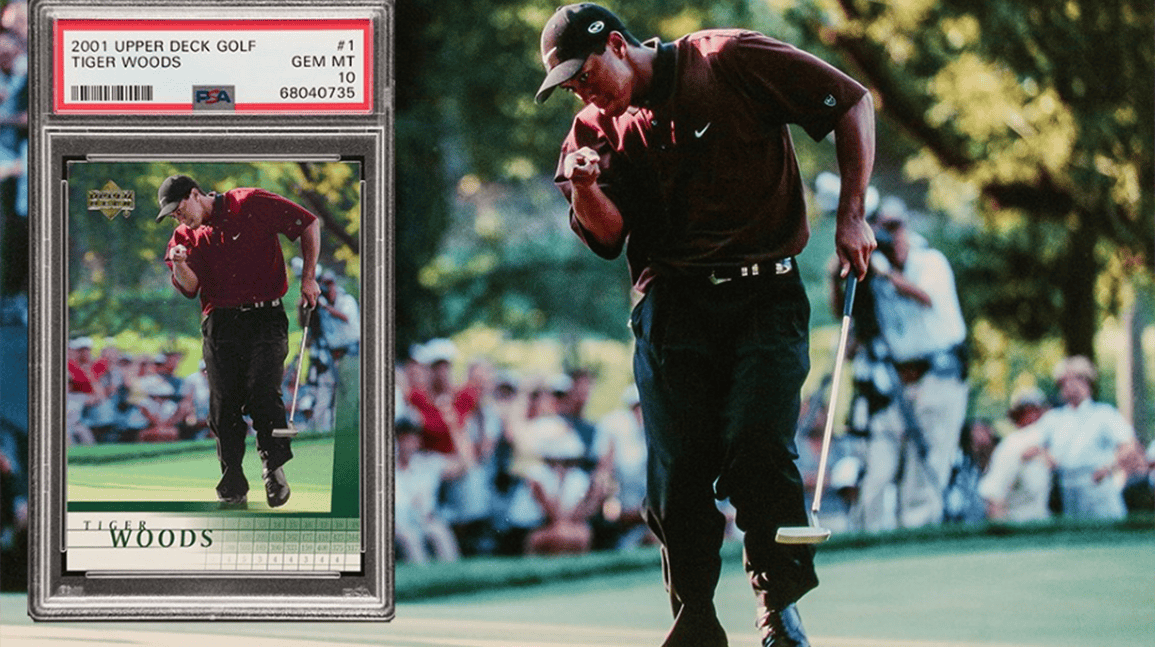Made-for-television golf dominated the desert from the 1980s to the 2000s
The Battle at Bighorn was one of several popular made-for-television events played in the Coachella Valley from the 1980s to the 2000s
- The “Battle at Bighorn” drew huge crowds and TV ratings, boosting Bighorn’s real estate sales.
- Tiger Woods, despite winning the previous day’s tournament and battling a cold, showed graciousness to Bighorn members.
- Garcia upset Woods in the match played under temporary lights, a first for golf.
Some moments in golf in the Coachella Valley seem to last forever. Lee Trevino’s 1987 hole in one in the Skins Game. Amy Alcott leaping into the lake after winning the Nabisco Dinah Shore in 1988. David Duval shooting 59 in the final round of the 1999 Bob Hope Classic.
Then there was Tiger Woods under the lights.
Twenty-five years ago, on Aug. 28, Woods was golf’s dominant figure at the height of his popularity and power. He took on Sergio Garcia, the game’s rising star from Spain, in an 18-hole match.
The Battle at Bighorn was designed to be played in prime time on the East Coast, requiring the final four holes of the match to be played under temporary lights at the Canyons Course at Bighorn Golf Club in Palm Desert. The event, featuring Woods and a lighted golf course, became a sensation for golf and the host course.
“People I meet in the valley who have been here a while, you meet people and they say, ‘Oh, I went to those Tiger Woods’ events,'” said Tony Ogrodnick, the general manager at Bighorn Golf Club and the point man for the first Battle at Bighorn 25 years ago. “I get that every year. They still remember.”
From playing the final four holes under lights to Garcia’s 1-up victory over Woods, the Battle at Bighorn was a huge success on television and for Bighorn as a marketing tool.
“We paid a million dollars for the tournament, and it was like $250,000 for the lights,” said Jim Colbert, a winner on the PGA Tour and PGA Tour Champions who was part of the investment group led by R.D. Hubbard who bought Bighorn in 1996. “I mean, it wasn’t an official event, but it was August, and the T.V. show. And in the next month, we sold like $40 million in real estate. Just from television and the people that came.”
The concept of Monday Night Golf on ABC had started in 1999 with Woods taking on David Duval at Sherwood Country Club in Thousand Oaks. Hubbard negotiated a three-year deal to move the event to Bighorn, with the event to be played on Bighorn’s newly opened Canyons Course.
The event was built around Woods, who at 24 years old had already won 28 PGA Tour events including five majors. Woods won three majors just that summer (the U.S. Open, The British Open and the PGA Championship). The day before the Battle at Bighorn, Woods had won the WGC-NEC Invitational at Firestone Country Club in Akron, Ohio.
“He was the man. Everyone was screaming, ‘Tiger, Tiger, Tiger,’” said Robert Masterson, another Bighorn resident and investor. “The fact that he accepted to play in (the Battle) was a home run. It was just a big home run.”
The Battle at Bighorn was part of a trend in the desert of made-for-television events, designed mostly to show off the Coachella Valley and the country clubs that were hosting the event. Those included the Diners Club Matches and the Lexus Challenge as well as the Skins Game. But the Battle at Bighorn, set for a 5 p.m. start on a hot August day, turned into a big gallery event as well, Ogrodnick said.
Bighorn expected around 4,000 people for the event, but around 7,000 actually showed up. Colbert believes that number is much higher, more around 10,000.
“At 2 o’clock the cars just started streaming in, and I was like, this is awesome,” Ogrodnick said. “And I called our privacy director at the time and I said Jim, this is great, they are showing up early, they are streaming in. At 3 o’clock, they are still streaming in and Jim is like, they are all the way down (Highway 74) to Haystack. Then they are all the way down to Shadow Mountain. They are all the way down to El Paseo. And people are coming in and they are buying tickets.”
Ogrodnick, who recalled tickets were $75 for the event, hadn’t expected to use empty home lots for overflow parking, but eventually 25 empty lots were filled with cars. The club had arranged for the Palm Desert High School football team to work the parking lot, but when the main lot was full, Ogrodnick laughed that the football team just left.
Woods had flown in early that Monday morning after winning in Ohio the day before. Woods was fighting a cold and was tired from the cross-country flight, but Bighorn members were impressed by Woods’ approach to the event and the members. John Beury, current chairman at Bighorn and nephew of R.D. Hubbard, who died in 2020 at the age of 84, recalled a meeting early in the day with ABC executives talking about how the technical aspects of the day should go.
“So going through all of this, and R.D.’s grandson, Derrik, is there,” Beury said. “He’s like 10 years old, and Tiger said, what’s do you like for lunch, Derrik? And he said cheeseburgers. Where is your favorite place to get a cheeseburger. He said In-N-Out. Tiger goes, well, as soon as this meeting is over, let’s you and me go to In-N-Out. And Tiger took Derrik to In-N-Out for lunch. I will always remember that.”
“He was very gracious, very gracious, with his time, the way he talked about things,” Masterson said. “This is before his bad stuff. He was just a nice young man, and he had a hell of a golf game.”
Colbert said the day showed Woods to be focused on his game but also that he was a human being.
“He was a great show because you could see the intensity,” Colbert said. “This isn’t fun and games. This is, I’m going to beat the hell out of you. There is a guy right now (Scottie Scheffler) doing the same things, but he doesn’t wear it on his sleeve. But Tiger wasn’t unfriendly. He was really intense, but he wasn’t unfriendly. It was the same with (Jack) Nicklaus.”
The match came just one year after Woods and Garcia had some tense moments during the 1999 PGA Championship, including Garcia standing on the 17th green and staring down Woods back on the tee. Woods won that championship by one shot over Garcia.
When the match started, gas-powered generators for the lights hummed through the course. The nines on the Canyon Course had been swapped, since the original closing holes were so rocky and set in a canyon, making lights and even just walking the course difficult. Only the final four holes of the match had lights, so it became difficult to see the golf ball on the 13th and 14th holes in the diminishing light under an overcast gray sky.
Woods took an early 1-up lead and still led through seven holes. Garcia won the eighth hole and the match remained square until the 16th hole, when Garcia took a 1-up lead. Garcia would hold onto his lead and win 1-up in an upset over Woods, who Garcia described after the match as “by far the best golfer in the world.” Garcia earned $1.1 million for the win, Woods took home $400,000, with each golfer pledging $200,000 to charities.
“It was a huge, huge success. It was huge for the area, but it was double huge for us,” Colbert said. “Those were the two hottest players, Tiger from the time he started and Sergio for the last two years.”
The Battle at Bighorn was also a television smash, garnering a 7.6 Nielsen rating, slightly better than ratings for the U.S. Open victory by Woods (7.5) and better than the British Open that Woods won that summer (6.4).
The 2000 Battle was the first of three at Bighorn, the second featuring Woods and Annika Sorenstam against Duval and Karrie Webb and the third seeing Woods and Nicklaus against Garcia and Lee Trevino. But the television ratings began to slide and Bighorn had already succeeded in selling real estate. In 2003, without Woods playing, the event moved to the San Diego area to become the Battle at the Bridges.
“We didn’t need it. It’s a lot of work and a lot to do in the summer,” Colbert said.
“For all the staff that is working here, you get through the season and it’s like, sigh,” Ogrodnick said. “But in Battle summers, oh, it’s like no break.”
Twenty-five years after the first Battle and 23 years after the event left the desert, Ogrodnick says even today’s Bighorn members relish the memory of the one-on-one match between Woods and Garcia with lights on the course.
“Out of all the events we’ve hosted, this was the biggest,” Ogrodnick said. “It’s Tiger Woods. He was bigger than life.”

